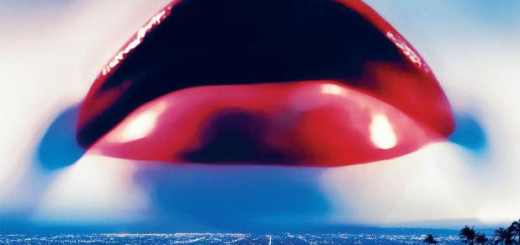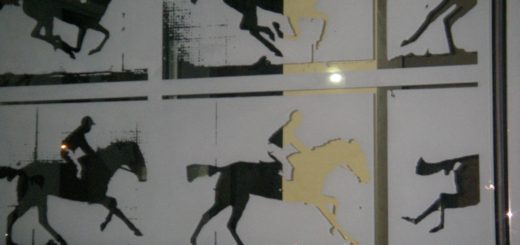Cool Daddio @ Nashville Film Festival
Cool Daddio: The Second Youth of R Stevie Moore
Nashville Film Festival coverage via Jason Sparks Our Man In Nashville
It is, after all, the Nashville Film Festival. There are going to be films relevant to my fair city. Nashville, as you may or may not have heard, is a city connected to music. Ever since a life insurance company decided to promote themselves by building a 500,000-watt radio station, this town has been associated with music, since it seems to literally emanate from here.
There are several films, mostly documentaries, about music at the Nashville Film Festival this year. Their subjects range from unmistakable icons (Chuck Berry) to those surviving at the fringes (a Japanese guitarist who can copy Jimmy Page’s guitar solos note-for-note). I chose one, and I have no doubt whatsoever that I chose wisely. Why? Simple: I discovered by watching it that one of the most profuse, brilliant musicians in the business lives less than ten minutes from my house. Also, I got to hug him.
The musician in question is one R Stevie Moore, and Cool Daddio: The Second Youth of R Stevie Moore is a great inroad to the man. He has never had a #1 single on Billboard. For that matter, he has never charted anywhere on Billboard’s fabled list. Which label is his—Columbia, Warner, Capitol, MCA, EMI, any sub-imprints thereof? None of the above, never has been, not likely at this stage to be; he releases his own recordings, now via website, originally through his own mail-order cassette club. (We get a glimpse into the inner workings of that club—a vast database? No. A recipe box filled with index cards.)
That lack of industry support, however, has never slowed Moore; we learn early on in the film that he has written and recorded some 2,000 songs on somewhere north of four hundred albums—all of which he recorded at his own house, in his own bedroom. And while he’s never known the limelight available to a label-backed pop star, there are folks who take him pretty seriously—people who have made a name for themselves in the “lo-fi” subgenre of rock music (of which Moore is essentially the godfather). Musicians like Mac DeMarco, Ariel Pink, and Tim Burgess sing his praises in the film, as do members of bands like The Vaccines, MGMT, and XTC. What they have to say about Moore is consistent, from artist to artist, specifically that he taught them how to do what they do, full stop.
Second Youth takes us exactly where we expect to be taken in a documentary about someone’s life, and does so thoroughly. We learn that Stevie is the son of Bob Moore, a sessions guitarist who played with a huge roster of musicians—particularly Elvis; you can hear Moore the elder here—but that Bob was a largely absent father (a byproduct of touring). We learn that R Stevie decides to emulate his Da early in life, but in his own way, on his own terms—retreating, even as a child, to his bedroom with a home-movie camera and a reel-to-reel recorder. He created, and creates, music of, by, and for himself. He moves as a young man to New Jersey, where an uncle works for Columbia Records (the biggest of all record labels, right up to the moment when their CEO sold them to Sony), in the hopes that the uncle can launch Moore’s career. That, suffice to say, never happens, and the one weak spot in this doc is a thorough explanation of why. The biggest clue we get is a quote from one of his supporters. Irwin Chusid, a longtime DJ at the vanguard NYC radio station WFMU, suggests that “a pattern of self-sabotage” tends to emerge in Moore.
It can’t be said that we absolutely see that self-sabotage in the film, but we can see where it might occur. The film shows us copious footage of Moore in his current home, in the Nashville suburb of Madison, where he lives in a modest ranch-style house filled with artifacts of his long, bizarre career; we see him bantering with his significant other (a lady he met in Arizona, who is considerably younger than Moore) and, of course, recording music. Establishing shots find him walking through Madison, which provided this reviewer the surreal thrill of seeing, on the big screen, a pharmacy at which I’ve picked up prescriptions, on a road I drive daily. At least, we see Moore walking as he can; now in his sixties, Moore walks with a cane, and we see him, in at least one scene, insist that he can’t be filmed today. Later footage follows Moore on a tour, one of a handful he’s undertaken; we see him in various altered states, and on pure air, and the result is like something we might have seen on early David Letterman—the spectacle of the heavyset man in his sixties trying to be a rock star reels us in, but what keeps us is the gonzo degree to which he succeeds at being one. (His rare tours are in fact the reason for the film, as directors Imogen Putler and Monika Paran first encountered Moore when he played in their hometown of London.)
If you wanted to accuse this film of anything, you could accuse it of being pro-Stevie propaganda, or a text by an R Stevie Moore apologist; you’d be right—Putler and Paran make their case thoroughly. They capture the man’s eccentric but engrossing personality, the impact he’s had on his followers, and, more than anything else, they present the fact that the man’s 2,000-plus songs are by and large absolute bangers. The film borrows its title from a track he released in 1978, a song he recorded himself and shot a video for himself—and it is infectious. Your mileage will absolutely vary, but I came away with a new appreciation for a genius who lives not 15 minutes away from my house. There’s not much better outcome one can expect from a local film festival.






















